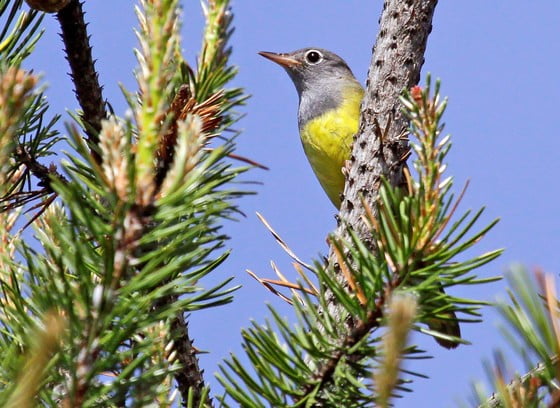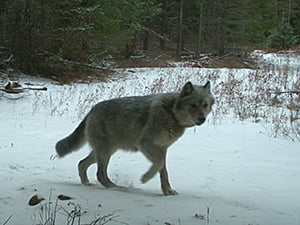
Since 1994, wild turkeys and other wildlife in Florida have benefitted from a wild turkey cost-share program, which has provided nearly $6 million for habitat management on the state’s wildlife management areas that are open to turkey hunting.
The direct funding partners for this program, which is one of the largest of its kind in the country, are the Florida State Chapter of the National Wild Turkey Federation (NWTF), the Florida Fish and Wildlife Conservation Commission (FWC) and the Florida Forest Service (FFS). This cooperative funding program allows government agencies and conservation organizations to pool their resources, combine efforts and improve more habitat.
“Turkeys really benefit from natural openings within forested habitats,” said Buddy Welch, FWC biologist and Wild Turkey Management Program coordinator. “Depending on what an area needs, the program helps pay for timber thinning, prescribed burning, roller-chopping, bush-hogging and mulching to open the forest canopy and reduce underbrush in favor of grasses and forbs.”
Besides turkeys, many other species also benefit from these habitat improvements, including game animals such as white-tailed deer and northern bobwhites, and imperiled species such as red-cockaded woodpeckers, gopher tortoises and eastern indigo snakes. So everyone who enjoys wildlife benefits from this program.
With much of Florida having a nearly year-round growing season, vegetation quickly grows too thick for turkeys to easily see and move through.
“If a person can’t walk around easily, neither can a turkey. Turkeys and poults need the forest floor to be open enough to move through but have enough vegetation to be able to hide from predators,” said NWTF Florida District Biologist David Nicholson. “Turkeys also prefer habitat where at least half the canopy is open, which allows sunlight to reach the ground and promotes native grasses to grow.”
This year, the program is funding 38 habitat improvement projects on 29 areas in Florida open to public hunting. Projects include roller chopping on Green Swamp Wildlife Management Area (WMA) and prescribed fire in several Northwest Florida counties as part of the Gulf Coastal Plain Ecosystem Partnership.
Due to concerns about the declining longleaf pine ecosystem, the Gulf Coastal Plain Ecosystem Partnership was formed in 1996 to manage and restore longleaf on public and private lands in Escambia, Santa Rosa, Okaloosa, Walton, Homes, Washington and Bay counties.
This year, the cost-share program is providing funding support to conduct prescribed burning on more than 53,000 acres within those counties.
“Fire is important to the long-term health of many of Florida’s forest ecosystems, so periodic controlled burns are done that release nutrients into the soil, stimulate seeds to sprout and help control invasive plants and hardwood undergrowth,” Welch said. “By doing this, native wildflowers and grasses can grow, which provide food, cover and better breeding habitat for wild turkeys and a wide variety of other native species.”
On Green Swamp WMA in Polk County, there is a roller chopping project funded in part by the cost-share program that has been going on for the past 10 years.
Roller chopping is a wildlife management technique used to remove dense saw palmetto and encourage growth of more favorable plants. A roller chopper is a large steel cylindrical drum that has blades pulled by a bulldozer or tractor.
After this year, 4,200 acres at Green Swamp WMA will have been roller chopped – paid in part by the cost-share program. After the roller chopping is completed, the Southwest Florida Water Management District will conduct prescribed burns on the areas.
“The NWTF is a strong proponent of preserving our hunting heritage, and we recognize the importance of hunters in funding wildlife conservation and hunting as an important wildlife management tool,” Nicholson said.
Turkey hunters directly contribute to the wild turkey cost-share program because a portion of the money spent on turkey permits, which is part of the licensing requirement to hunt turkeys in Florida, goes into that fund.
“Many hunters and NWTF members are heavily involved in raising funds for the wild turkey and its habitat by participating in NWTF hunting heritage banquets, whereby a portion of those funds raised goes into the cost-share program,” Nicholson said. “Hunters’ purchases of hunting equipment also helps support wildlife conservation through the Wildlife and Sport Fish Restoration Program, which brings federal grant funding to state wildlife management agencies such as the FWC.”
Through this combined effort from the NWTF, FWC, FFS and Florida turkey hunters, the wild turkey population is healthy and flourishing in Florida. And, if you’re a turkey hunter, then you must be getting excited because spring turkey season and the youth turkey hunt weekends are just around the corner.

